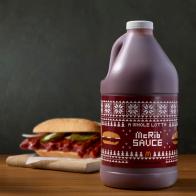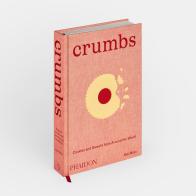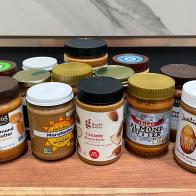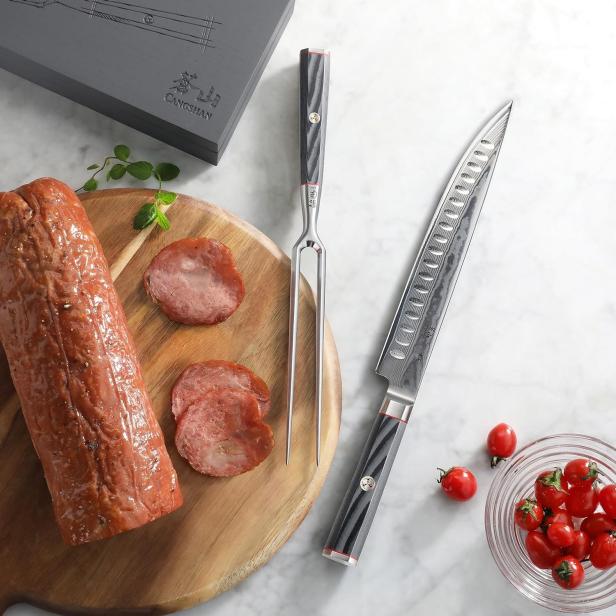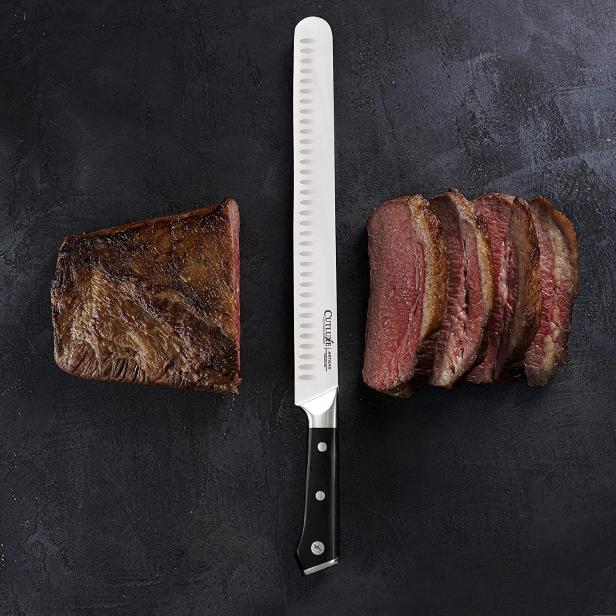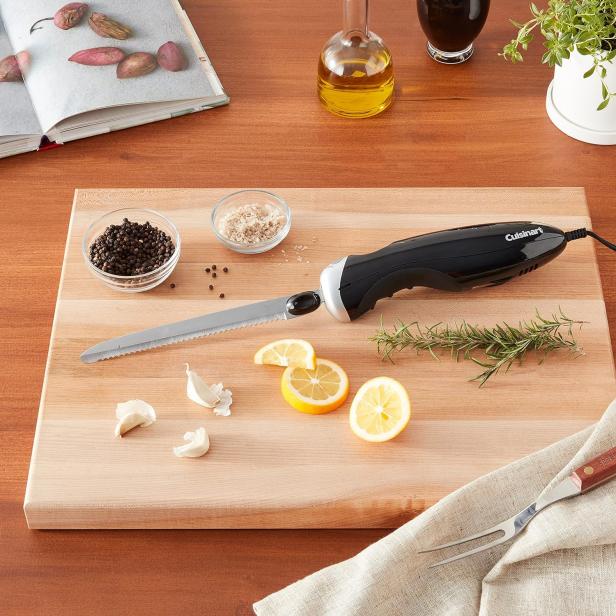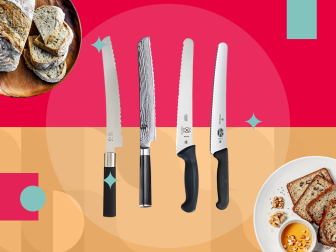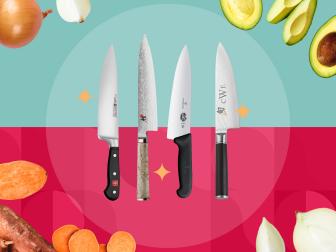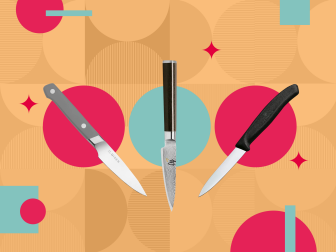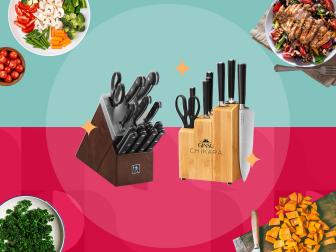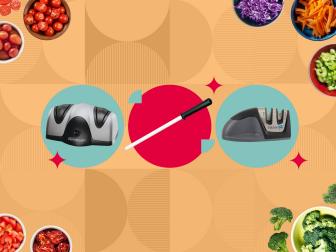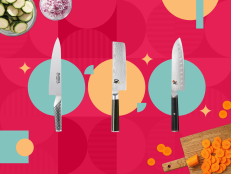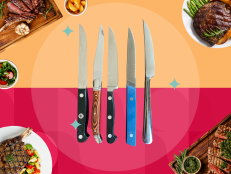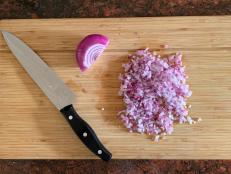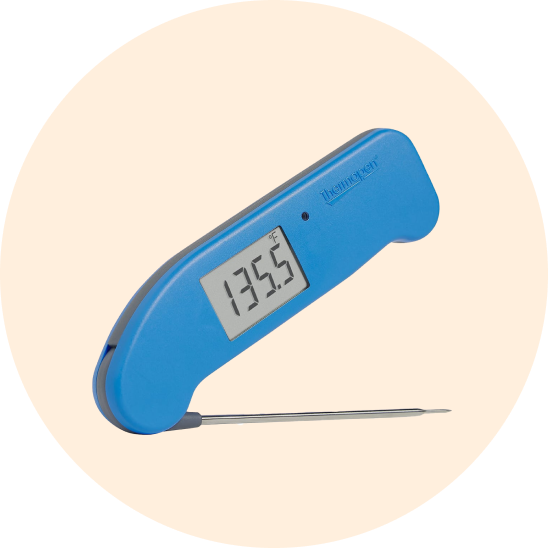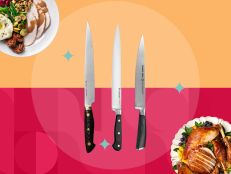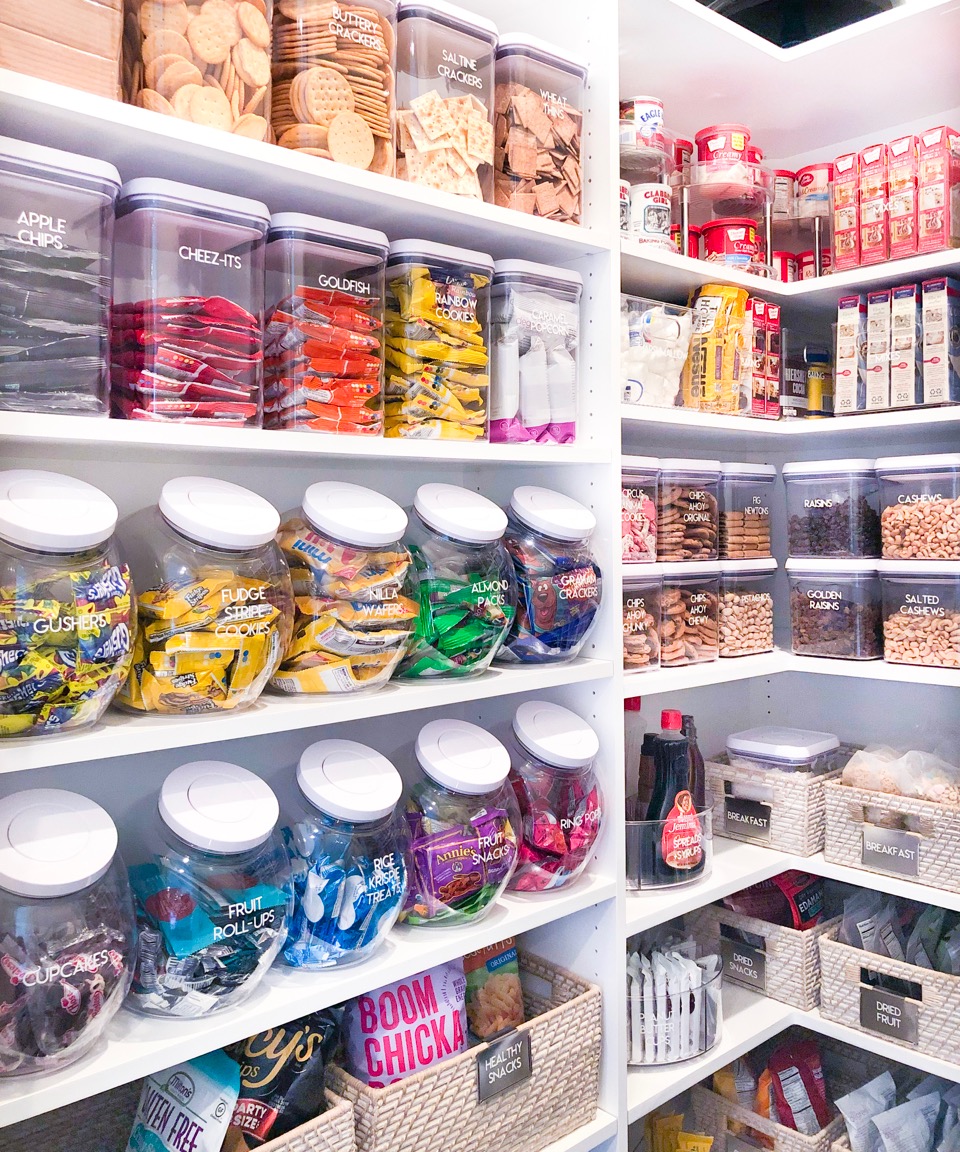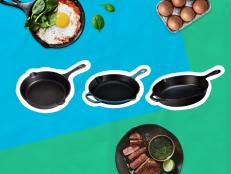4 Best Carving Knives of 2024, Tested and Reviewed
Ready for restaurant-quality slices of your favorite roasts? We’ve got the best carving knife for you.
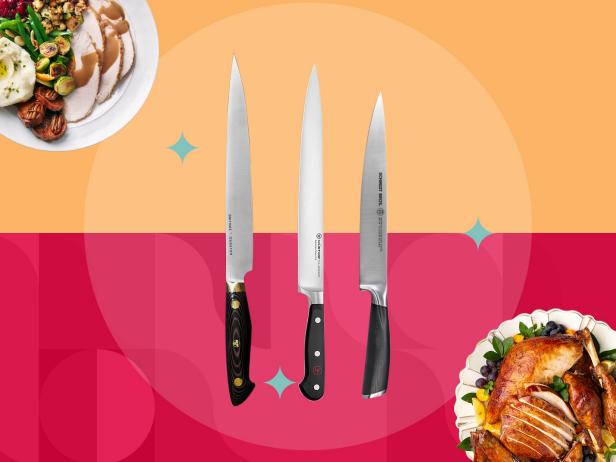
There’s typically one major moment in every household during which a carving knife could make or break the meal: cutting the Thanksgiving turkey. It’s by far the most stressful moment of the whole day’s festivities, as all the hungry family members stare at whoever is nervously trying not to make a mess of the cooked bird. But fear not! With their elongated blades and carefully balanced design, carving knives make slicing of big cuts of meat a breeze.
Unlike a versatile chef’s knife, a carving knife is a specialty knife meant to perfectly do one task: carve large pieces of meat. While a chef’s knife has a wide blade that’s usually around 8 inches long (and is typically sturdy enough to cut through bone), a carving knife’s blade is usually no more than 1.5 inches wide and can be up to 14 inches long (and should never be used to cut through bone). The deliberate size and shape of the carving knife are intended to help get the smoothest knife cuts possible: the long, slender blade reduces the number of cuts and amount of motion required to slice off pieces of meat, therefore preserving the juices of the meat. While the Thanksgiving turkey is the go-to meal for using a carving knife, a carving knife can be (and should be) used to cut all larger pieces of meat, including whole chicken, large cuts of beef (like roasts or brisket), large cuts of pork and lamb roasts.
When using a carving knife, the meat being carved is usually something that wasn’t cheap and that took a decent amount of time to cook, so it’s likely you’d want to carve it the best you possibly could. Having the right carving knife in your kitchen can make the difference between delicate, thin slices of your favorite roast, and meat that’s crumbling from being sawed away at with a less-than-ideal knife. Whether you’ve never used a carving knife before or are looking for an upgrade, we tested top-rated carving knives to find the best carving knife for you.
Our Top Carving Knife Picks
Also in This Article
- High quality craftsmanship and materials
- Polished blade prevented sticking
- Great meat fork and storage case
- Not the most ergonomic handle
- Shallow blade requires careful grip
This knife was the culmination of all the best qualities from the whole group of knives put together: it was well-crafted, a breeze to use, comfortable to hold, balanced and extremely sharp right out of the box, requiring little to no effort to cut through meat and create delicate, thin slices. The high-polish blade both allowed the knife to easily glide through meat without sticking and made it very easy to clean.
In the chicken test, the knife was nimble enough to get around the bones in the chicken and cut through the white meat without shredding it at all. In the roast beef test, the results were similarly impressive, effortlessly slicing through the meat to create deli-like slices. The knife was even a pro at getting through the tough crust of sourdough, not crumbling the bread. It was a balanced knife that felt like it was designed well for the tasks in front of it. Plus, the meat fork made it even easier to get a good grip on the meat while slicing, providing the extra stability needed to achieve the level of precision necessary.
If you’re looking for a knife that feels professional in performance, design and accessories but without the $300+ price tag, look no further than the Cangshan Yari Series Carving Knife Set.
- Blade length 9 in
- Blade material Cangshan’s X-7 high-alloy steel, with 67-layer Damascus steel
- Handle G10 (highly durable composite)
- Sharp granton edge reduces sticking
- Balanced and high-quality feel
- Great blade length for smooth cutting
- (due to length) Not ideal for cutting around bones
- Rounded tip is not great at getting in small areas
From the very first test to the last few slices, our testers were impressed with the Cutluxe Artisan Series Slicing Knife. This knife has the feel of an artisan-made piece of cutlery but with a much lower price point, making this high-end, high-performing carving knife accessible to everyone. With one of the longest blades in the group, it was also one of the sharpest, consistently having one of the top performances in each test. At one point, our testers were using the Cutluxe Artisan Series Slicing Knife as the benchmark, with its consistently excellent results!
Carving the chicken was the only task that posed a challenge for this knife. Due to its long (12in) blade with rounded tip, it wasn’t the easiest knife to navigate around the chicken bones and into tight corners. Some of the other knives with smaller blades and pointed tips had a slightly easier time with some of those tricky chicken joints. Really where this knife was shining was in tests that were more slicing-focused, like cutting the breast meat off of the chicken and in the roast beef and sourdough tests. Our testers were impressed with the thin slices this knife was able to achieve from the roast beef, while the results from other, more expensive knives did not compare. The granton edge of the knife helped to prevent the slices from sticking to the blade as it cut, resulting in smoother, more perfect pieces of meat.
Other than our top electric pick, the Cuisinart Electric Knife with Cutting Board, this knife was the top performer in the bread test. The sharp blade seamlessly cut through the thick crust and created thin, smooth pieces of bread. All-around, the testers were raving about the Cutluxe Artisan Series Slicing Knife, so it was a no-brainer that it would take the spot at best value. This knife is perfect for anyone looking to get a high-quality carving knife without the high-end price tag.
- Blade length 12in
- Blade material German 1.4116 high-carbon stainless steel
- Handle material Pakkawood
- Makes easy work of carving anything
- Quick release blade for easy cleaning
- Super efficient
- Not ideal for getting around bones
- Bulky plastic handle
- Cord adds complication
The Cuisinart Electric Knife with Cutting Board actually made carving FUN! Yes, we said it and meant it. Carving with this electric knife was an absolute breeze. It made carving several pounds of roast beef feel like light work, gliding through the task with little effort whatsoever. The double blade design gently and swiftly cuts through meat without any difficulty, never once crumbling or shredding the meat as it did so. At the lowest price point of all the knives in the test, our testers were blown away by how efficient and effective this knife was at handling chicken, beef and sourdough! It also comes with a small cutting board and very useful meat fork, both of which were great additions to this already powerful tool.
The one issue with this knife is that it moves pretty quickly; as the blades vibrate back and forth, the knife flies through the meat effortlessly, meaning it can be pretty difficult to gently navigate around the bones of a chicken (or delicately remove anything). This knife was best used for slicing a large area/piece of boneless meat, like chicken breast and roast beef. It made it easy to get slices that were deli-style thin, something that is usually difficult to achieve at home. It was no surprise that this knife (the only serrated knife in the batch) was excellent when used with bread, easily taking the top spot in that test. If you’re looking for a knife that makes those larger-than-life carving tasks (the turkey!) feel simple and easy, this Cuisinart Electric Knife with Cutting Board is an absolute winner.
- Blade length 7.75in double blade
- Blade material stainless steel
- Blade handle plastic
- Extremely sharp
- Very comfortable handle and balanced feel
- High polish mirror finish prevents sticking
- Pricey
If you want to carve like a pro, with the best tool on the market, the Shun Premier Blonde 2-Piece Carving Knife Set is perfect for you. With the highest level of expert craftsmanship out of any of the knives tested, this knife is truly a work of art as much as it is an effective piece of cutlery. Every inch of the knife is designed with comfort and efficiency in mind, and no detail is spared. Our testers were truly in awe of this knife, and it did fantastically in every test (no surprise there!).
It easily worked around the bones in the chicken, carving beautiful slices of perfectly smooth meat without clumsily hitting bones. The roast beef was even easier to carve, and the Shun (in combination with the included meat fork), created thin slices of beef with no effort at all. The sourdough wasn’t even a match for this knife, as the ultra-sharp blade cut through the crust like it was nothing. Truly the only downside to this incredible knife is the price. If you want the best carving knife money can buy, this Shun Premier Blonde 2-Piece Carving Knife Set is worth the splurge.
- Blade length 9.5in
- Blade material Shun's Premier VG-MAX steel, with 68 layers of Damascus cladding and a hammered mirror polish “tsuchime” finish
- Handle material Walnut-finished pakkawood
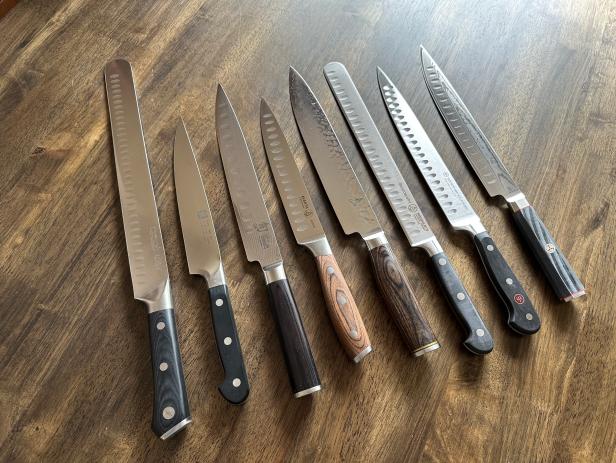
Joelle Battista
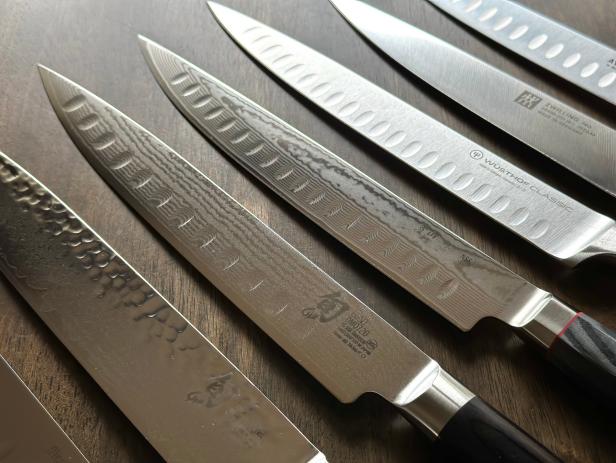
Joelle Battista
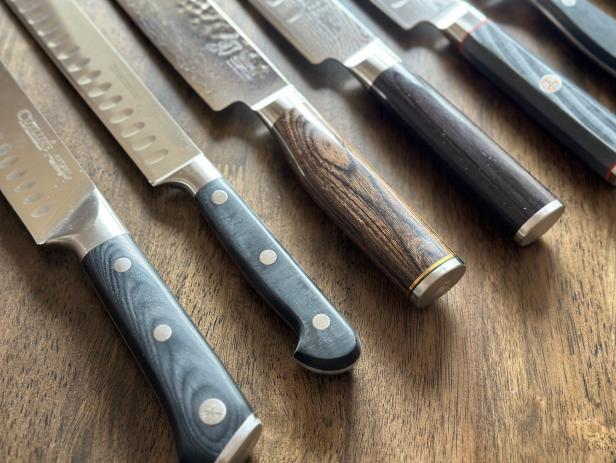
Joelle Battista
How We Tested
With such a wide range of knives to test, our testers started the testing process by looking into how each of the knives was made, what materials the blades and handles were made of, and documenting the size and weight of each knife. Any special features were noted too, so they could be put to the test in the cooking portion of the rubric. When it came time to cook, we landed on three big tests to help determine which knives were worth the investment: carving a whole roasted chicken, carving thin slices of roast beef, and cutting slices of crusty sourdough bread. Each of the tests provided different insight into the knife and how it would perform long-term.
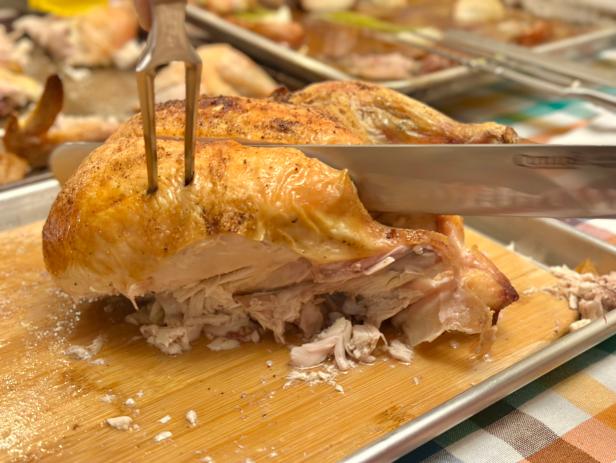
Joelle Battista
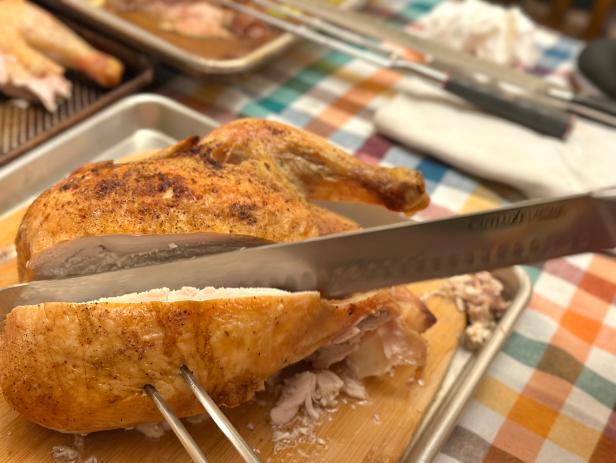
Joelle Battista
The chicken carving test helped our testers determine how easy each knife was to maneuver around bones and tight spaces without shredding the meat. We knew that the chicken’s meat texture (white meat and dark meat) was very similar to turkey, covering the question of whether the knife would crumble the delicate white meat. Because a whole chicken is significantly smaller than a turkey, it was even more important how maneuverable the knife was while carving the meat and avoiding bones.
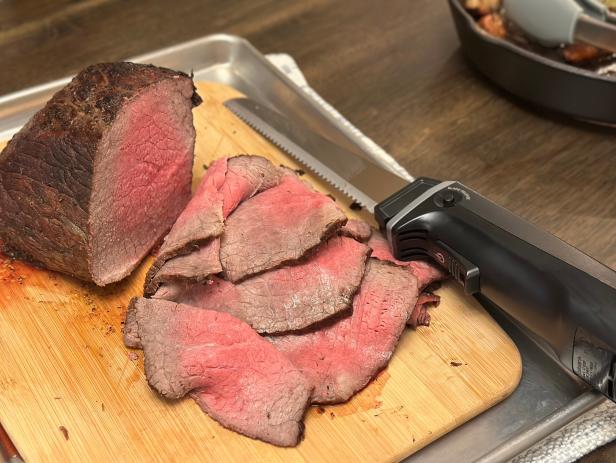
Joelle Battista
Next, our testers used each knife to carve a whole roast beef, namely, top-round that had been seared and slow-roasted to medium-rare perfection. While the meat was still hot, testers had to see how well they could achieve thin slices of the meat with each knife. The roast was a crucial test for helping to evaluate how the knife would carve over a large surface area. The more the knife had to ‘saw’ back and forth to cut a slice from the large roast, the more juice was lost and the worse the slices looked. The best knives were able to glide over the surface of the roast and smoothly take off thin slices without shredding the meat.
Finally, each knife was used to cut a crusty loaf of sourdough bread. Now, we totally understand that a serrated bread knife is the best for bread, but our goal was to see how sharp the knives were to start, and how sharp they stayed after being used on the loaf of bread. This test also exposed which knives were better multi-purpose knives and which ones were only effective on meat.
What to Look for When Buying a Carving Knife
Accessories
While some knives don’t come with anything extra (and can still be really great knives), having the extra accessory of a meat fork can be a game-changer. A meat fork is a long, sharp tool with two tines that makes it easy to hold a larger roast while carving off thin slices. Due to its blunt design, a regular fork is simply unable to do the same job, as it requires significantly more effort to hold the meat. Our testers loved the carving knives that came as a set because having the meat fork made the carving work so much easier, and you’ll notice 3 of of 4 top picks are sets!
Comfort
Comfort makes a huge difference in your satisfaction with a carving knife. An uncomfortable handle (on any knife) is a deal breaker. If it isn’t comfortable to hold when you try it out the first time, keep looking; it won’t get any better when you’re really using it. Another big factor in comfort is balance: if a knife is not well balanced between the blade and the handle, it could require significantly more effort to use.
Price
A good carving knife could range in price anywhere between $50 and $300+ dollars, and the biggest factors in that price are craftsmanship and material. On our list, you’ll find two knives under $100 and two above, showing that a good carving knife can really be anywhere in that range. We did not find that just because the knife was more expensive, it was better performing, so price is not necessarily an indicator of the quality.
FAQs
What’s the best carving knife?
The best carving knife is one that is well-balanced, easy to use, and is comfortable to hold. All of the picks on our list fit these criteria, which is why we can confidently recommend them all.
What’s the best size for a carving knife?
All carving knives are going to be longer, probably significantly longer than the next longest knife in your collection (other than maybe a bread knife). The long length of the blade helps to ensure the least amount of motion required to get slices of meat off of a big roast and helps preserve the juices. The average blade size for a carving knife is around 9 inches. The electric carving knife on our list has the shortest blade at 7.75in long, but the double-blade design makes up for the slightly shorter length. There is no one ideal size, as there are many other design aspects that will determine if a carving knife is worth purchasing, like the balance and the blade design.
How do you clean a carving knife?
Regardless of whether or not a knife (of any kind) advertises being dishwasher safe, knives should never be washed in the dishwasher. The high heat of the dishwasher can degrade the knife over time and significantly impact its’ sharpness. Knives should always be carefully hand washed by using a sponge along the spine (dull side) of the blade. You should never wash a knife by putting the sharp side of the blade directly into the sponge, as it can cut through the sponge and directly into your hand. Knives should be fully dried and put away immediately after washing to prevent rust and other water damage.
How often should you sharpen a carving knife?
The frequency with which you should sharpen your knives is proportional to the frequency with which you use the knife. If you don’t use the knife very frequently, you likely don’t have to sharpen it often. Avoid using the knife in ways that could dull the blade, like trying to cut through bones, and your carving knife will be good to go for several uses before needing to be sharpened. If your knife starts to feel dull, and you’re having to apply more pressure to cut through, it’s a signal that it’s time to sharpen it!
Can you use a serrated carving knife?
Our top pick for electric carving knife is the Cuisinart Electric Knife with Cutting Board, which is comprised of two finely-serrated blades that move quickly back and forth to cut meat thinly and effortlessly. Other than in this electric format, we do not suggest using a serrated knife as a carving knife, as the teeth on the knife can tear away at the meat, rather than glide through it.
Why You Should Trust Our Tester
Joelle Battista is an expert in all things kitchen gear, and carving knives are no exception. With a culinary school degree and almost a decade of professional culinary experience, she's worked with carving knives for years in a variety of settings, from professional kitchens to test kitchens (and in her own kitchen!). Her cooking experience is topped by several years of working in product development, so she knows what it takes to make a high-quality piece of kitchen equipment designed with the user in mind. Her recommendations are founded on her professional eye for quality and craftsmanship combined with the importance of approachability and ease of use for the home cook.












